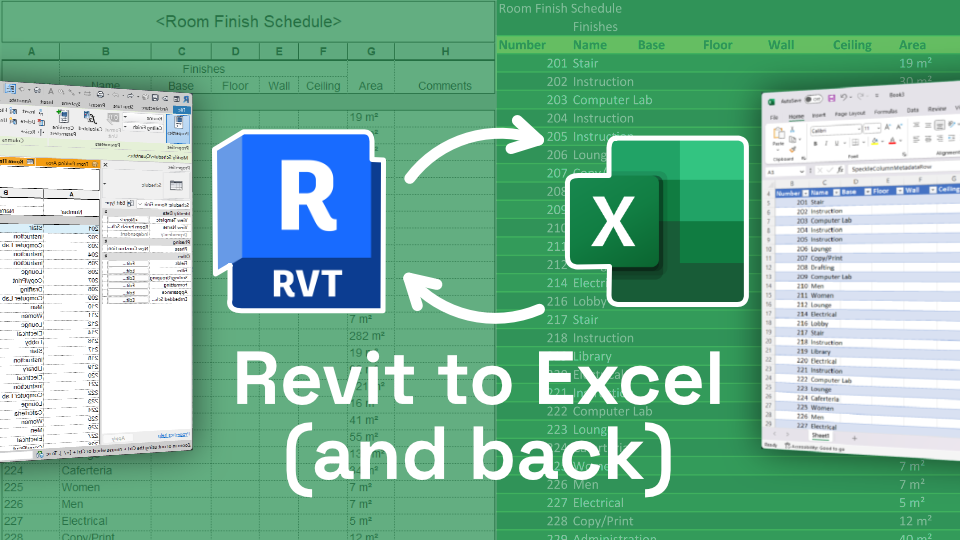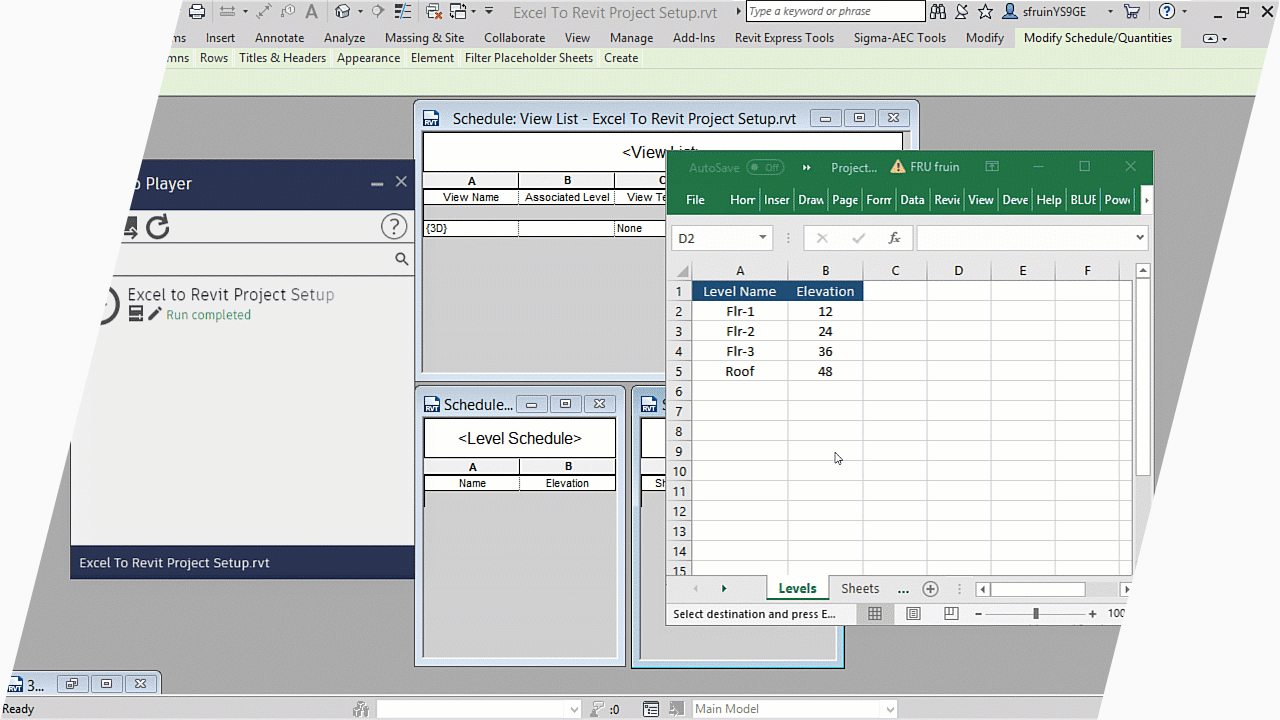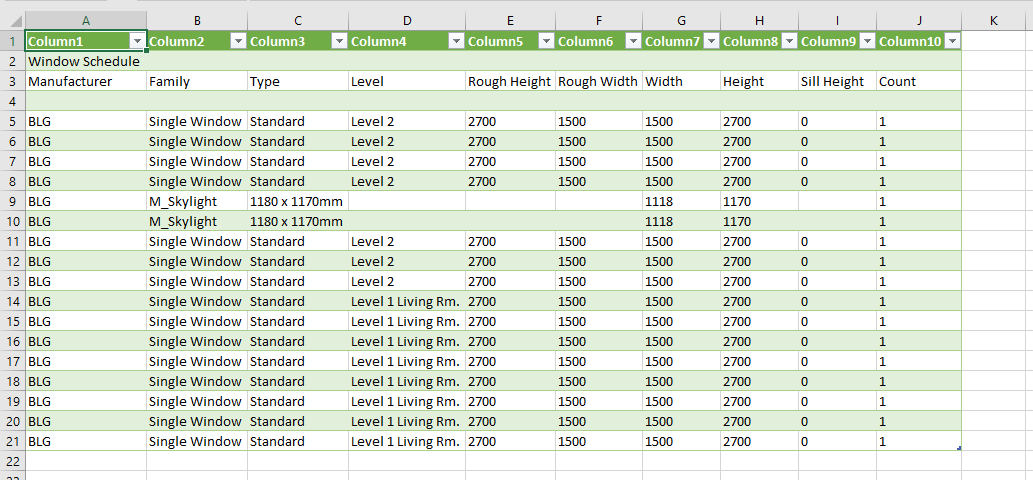Open New Opportunities with Innovative Revit Plugins
Wiki Article
Damaging Obstacles: Excel Importation Techniques for Advanced Revit Users
Are you an innovative Revit user seeking to take your abilities to the next degree? In this short article, we will show you how to break barriers by leveraging Excel for importation in Revit. Check out numerous information importation approaches and master Excel assimilation to improve your Revit modeling abilities. With our methods and pointers, you can get rid of importation challenges and end up being a true professional in utilizing Excel for your Revit projects. Prepare yourself to stand out in your Revit journey!Advanced Revit Users: Leveraging Excel for Importation
You can conveniently take advantage of Excel for importation as an advanced Revit individual. Excel is a powerful tool that can greatly enhance your operations and efficiency in Revit. With its capability to handle huge amounts of data and execute complex calculations, Excel can be a valuable property in handling and arranging your job information.One method to utilize Excel for importation is by making use of the "Link Excel" attribute in Revit. This function permits you to link an Excel spread sheet straight into your Revit task, allowing you to update and integrate data in between both programs. This can be specifically helpful when handling routines or tracking changes in your job.
Another way to use Excel is by utilizing the "Import/Export" function in Revit. This attribute enables you to import and export information in between Revit and Excel, providing you the versatility to collaborate with information in both programs. You can import data from Excel into Revit to produce elements such as wall surfaces, doors, or spaces, and you can additionally export data from Revit to Excel for additional analysis or coverage.

Exploring Information Importation Methods in Revit Making Use Of Excel
Checking out how to import data from Excel right into Revit uses efficient methods for integrating info. When you import data from Excel, you can seamlessly transfer data such as room timetables, product listings, and equipment information into your Revit job. This procedure permits you to conserve time and effort by avoiding manual information entrance.To import information from Excel right into Revit, you can use the "Import/Export" attribute. This function allows you to map the Excel information areas to the matching Revit specifications, guaranteeing that the details is correctly designated within the version. By picking the suitable import options, you can regulate exactly how the data is imported and just how it interacts with your job.
An additional technique for importing information from Excel into Revit is by using Eager beaver. With Eager beaver, you can create personalized scripts that import information from Excel and manipulate it within your Revit project.
Mastering Excel Assimilation for Advanced Revit Modeling
One crucial strategy is importing information from Excel spreadsheets straight right into your Revit design. With a couple of straightforward steps, you can map the Excel columns to the equivalent Revit parameters and import the data precisely.An additional valuable method is exporting data from Revit to Excel. This enables you to draw out information from your model, such as timetables or material amounts, and examine it in Excel using formulas, charts, or various other powerful tools. By leveraging the capabilities of Excel, you can carry out complex calculations, develop custom reports, and gain important understandings right into your task.
In enhancement to information transfer, Excel combination can automate recurring jobs in Revit. By developing macros or manuscripts in Excel, you can automate procedures like creating sights, producing sheets, or using conventional family members - import excel into revit. This not just conserves time however also makes sure consistency across your project
To grasp Excel combination in Revit, it is crucial to comprehend the information that site framework and just how Revit connects with Excel. By acquainting on your own with the offered devices and methods, you can open the complete capacity of Excel assimilation and take your Revit modeling to the following degree.
Overcoming Importation Challenges: Excel Techniques for Revit Experts
When overcoming importation obstacles, it is very important to be familiar with efficient Excel methods that can benefit professionals in Revit. As a sophisticated Revit individual, you comprehend the importance of effortlessly importing data from Excel into your projects. You might run into different obstacles along the means. By utilizing reliable Excel methods, you can get over these challenges and enhance your efficiency.
An additional useful strategy is using the "Transpose" function in Excel. This permits you to transform information from rows to columns or vice versa. When importing data right into Revit, this can be particularly handy when you have data in a vertical layout in Excel, but you require it to be in a straight layout in Revit.
In addition, utilizing Excel solutions such as VLOOKUP and INDEX-MATCH can significantly aid in mapping information from Excel to Revit. These formulas permit you to search for details values in Excel and fetch equivalent data from another column. When importing large datasets right into Revit., this can conserve you time and initiative.
Excel Data Importation Tips and Techniques for Advanced Revit Users
By familiarizing on your own with efficient Excel suggestions and techniques, you can enhance your information importation process as an innovative individual of Revit. Excel is a powerful device that can considerably help with the importation of information into Revit, saving you time and enhancing your performance. One beneficial pointer is to utilize the "Text to Columns" feature in Excel to separate data right into various columns based on a delimiter. When you have data in a single column read this that needs to be divided right into numerous columns in Revit, this can be particularly useful. Furthermore, using Excel's "Paste Special" feature enables you to paste data from Excel into Revit while keeping format, such as cell color or font style. When importing data that requires certain formatting in Revit, this can be especially valuable. An additional handy trick is to use Excel's "Find and Change" function to rapidly make changes to your data before importing it into Revit. You can easily replace particular text or personalities with others, conserving you the time and effort of manually editing the information in Revit. By utilizing these Excel tricks and suggestions, you Related Site can simplify your information importation process and become even a lot more competent being used Revit.
Final Thought
You have actually now found out useful techniques for importing information from Excel into Revit as an advanced user. Go in advance, damage those barriers and excel in your Revit projects!
When importing information right into Revit, this can be especially practical when you have data in an upright style in Excel, however you need it to be in a horizontal style in Revit.
In addition, utilizing Excel solutions such as VLOOKUP and INDEX-MATCH can substantially help in mapping data from Excel to Revit. Furthermore, using Excel's "Paste Unique" function enables you to paste information from Excel into Revit while keeping format, such as cell shade or font design.
Report this wiki page